When we think of architectural achievements, we tend to look to modern marvels, like the Empire State Building, or the Panama Canal. But all these buildings are a step in a long history of architectural achievement, building on the lessons learned thousands of years ago. This is why many architects take inspiration from buildings of the past.
Make your architecture practice run smoothly with our project management solutions. Find out more.
Take a look at these then architectural marvels, and what makes them so unique.
1. The Red City of Petra

Image by Mileli, on Wikipedia Commons.
Lost the modern civilisation for hundreds of years, the city of Petra was rediscovered in the early 1800s by an intrepid European traveller. Built by the Nabateans, an advanced society who controlled a vast area from Israel and Jordan to the northern Arabian peninsula. Petra was their capital city between 400BC-AD106, when they were conquerd by the Romans.
What makes this great city truly remarkable is the fact that each of her monumental structures has been hewn directly from the surrounding cliffs. Veins of red, white, pink and grey rock run through the buildings, and you can see a mixture of Nabatean and Greco-Roman architectural elements on the buildings, showing the influence of the different cultures throughout the ancient world. The most magnificent is Al Khazneh (The Treasury), infamous for its appearance in the film Indiana Jones and the Last Crusade. The great carved urn on top of the Treasury is riddled with bullet holes, from local bedouin men shooting at it with rifles in an attempt to get at the treasure inside (the urn is actually solid stone).
2. The Great Pyramids of Giza
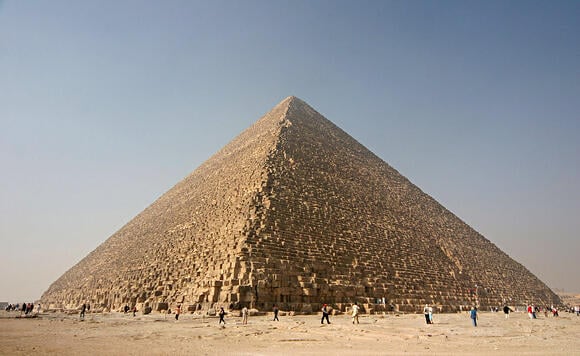
Image by Nina Aldin Thun, on Wikipedia Commons.
Perhaps the most iconic ancient architectural achievement of all time, these three pyramids dominate the landscape of the Giza plateau. Built as the eternal resting places of three Egyptian pharaohs between 2649-2150 B.C., the tombs were looted in antiquity (after all, a pyramid is like having a big, blinking sign in the desert saying “I’m filled with riches. Rob me!”), Inside each tomb are three chambers, one of which (the King’s chamber) contains air shafts with astrologically significant allignments.
The largest pyramid, the Great Pyramid, is over 145m high. It’s base is level to within an inch, and it took teams of workers nearly 20 years to precisely cut, transport and fit the approximately 2.3 million limestone blocks that make up the structure. This would require adding 12 blocks to the pyramid every hour, day and night, to complete the structure within the 20 year timeframe - a great deal of planning and project management skill went into doing this - probably the Egyptians would've been grateful for the existance of WorkflowMax. The blocks are fitted so precisely that there is only a 0.5 mm gap between each one. All this was achieved without pulleys, iron tools ... or even the wheel.
3. Chand Baori, India
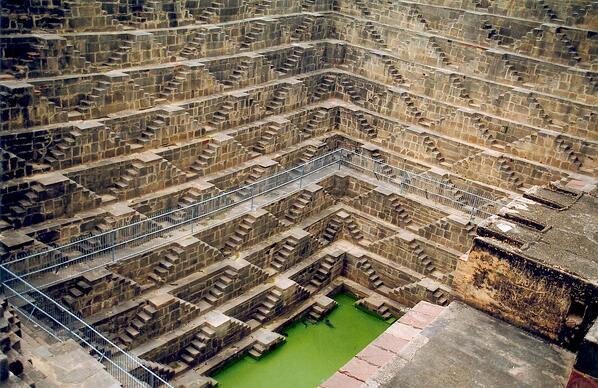
Image by Doran, on Wikipedia Commons.
For some reason, this beautiful and intricate structure never seems to make any “best of the ancient world” lists - well, that’s about to change. In my humble opinion (and I was an archaeologist before I was a writer, so this opinion carries SOME weight) Chand Baori well is one of the most architecturally fascinating structures of the ancient world. Built around the 10th century AD, the well extends 100 feet below the earth, making it one of the world’s deepest
Local legend has it that ghosts built the steep-sided well and 3,500 steps in a single night, which is one way to explain how a structure was built with such precision and complexity given the tools of the time. The well is designed to be 5-6 degrees cooler than the surface, so locals gather there to escape the intense heat. Modern architects have often taken inspiration from the patterns in the symmetrical staircases lining the well’s sides.
4. Underground Churches, Lalibela, Ethiopia
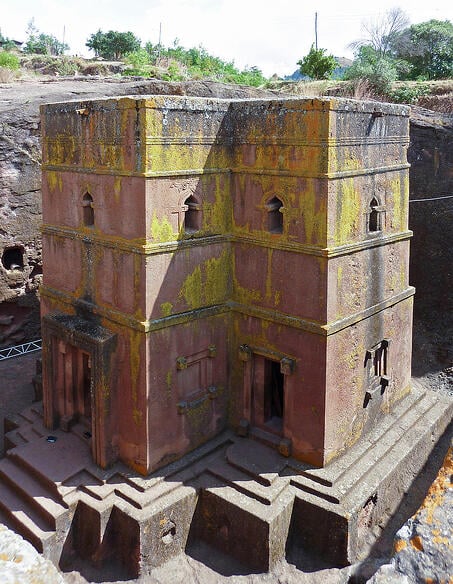
Image by Bernard Gagnon, on Wikipedia Commons.
In the mountainous region of Ethiopia lies the village of Lalibela, once the heart of Ethiopian Christianity and one of the nation’s holiest cities. The 11 monolithic stone churches of Lalibela have one remarkable feature in common - they are all hewn out of the same block of red granite. Dates for their construction are uncertain, but believed to be around the 12th and 13th century.
The roofs of the churches are at ground level, and their georgraphic placement is desigtned to mimic the holy sites in Jerusalam. All the churches are connected via a series of underground tunnels and tombs, and also incorporate an advanced water collection and cachement system that exploits the geography of the area (which brings water to the village at the top of the mountain). The largest structure, the Biete Medhana Alem, is believed to be the largest rock-cut church in the world.
5. Sumerian Ziggurat at Ur
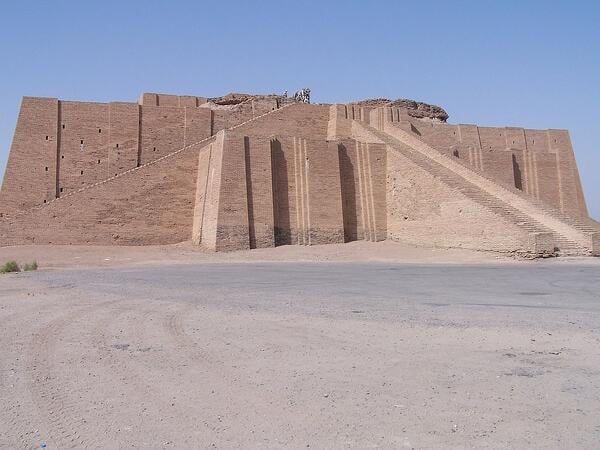
Image by Hardnfast, on Wikipedia Commons.
The Sumerians were one of the oldest civilisations in the world. By 2000BC Sumerian cities were thriving centres of trade, banking, law-making, literature and learning, and epic architecture, with paved roads, monumental arches, and vast temple complexes. Very little archaeological evidence from their civilisation remains, and certainly nothing as impressive as the Ziggurat of Ur.
The Ziggurat of Ur is a large, stepped pyramid-like structure, part of an enormous temple complex dedicated to the god Nanna. At the top of the Ziggurat was a small shrine to the god, containing a golden couch where a different woman from the village would sleep every night. The Ziggurat had crumbled to ruins by the 6th century BC, and parts of it were reconstructed by Saddam Hussein.
6. Banaue Rice Terraces, Philippines

Image by Sam Isleta, on Wikipedia Commons.
Many ancient wonders aren’t great monumental buildings at all, but remarkable engineering feats designed to provide food or safety for people. These rice terraces are 2000 years old, and located 1500 ft above sea level. Covering 10,360 square kilometers, the terraces were built by hand, with minimal equipment, on the edge of a mountain range.
The terraces offered the ancient people of the area a vast tract of land for food production, and they designed a complex irrigation system to keep the fields fertile. Many of the rice fields are still in use by local people today.
7. Leptis Magna, Libya
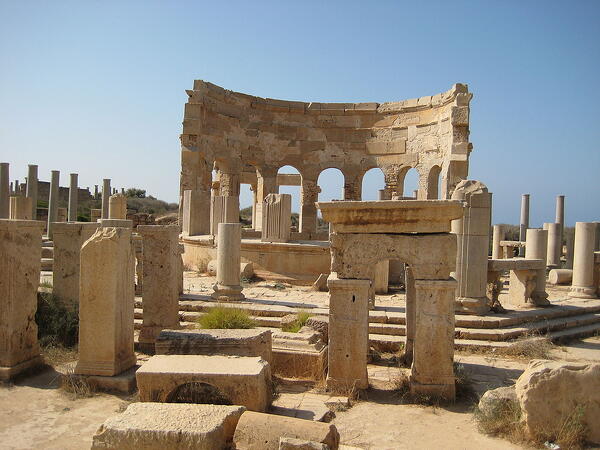
Image by Sasha Coachman, on Wikipedia Commons.
Forget the swarming tourist crowds of Rome, if you want to experience Roman architecture firsthand, head to Leptis Magna, the most unspoiled Roman city in the Mediterranean. Founded in 1100BC by Phoenician colonists and traders, Leptis Magna became part of Carthage’s lands until 146BC, when it became part of the Roman Republic.
The forum, basilica and Severan arch are some of the city’s most impressive sights, as they are some of the finest examples of New Roman architecture in the world, with dignified columns and unique linear forms demonstrating the combinated of Roman sensibilities with African and Eastern aesthetics. The ancient port, built under Nero and enlarged under Septimus Severus, demonstrates Roman industrial architecture, with quays, jetties, fortifications, storage areas, warehouses and temples.
8. Meteora, Greece
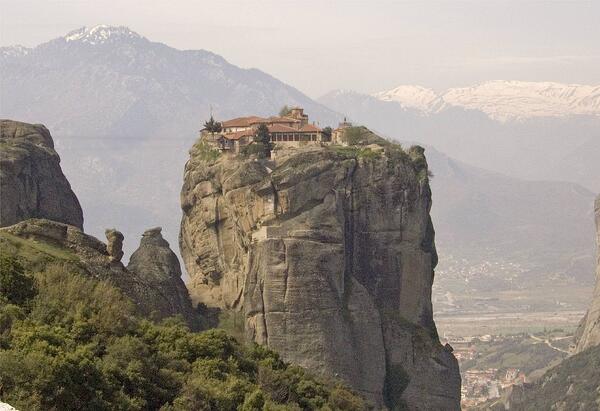
Image by Napoleon Vier, on Wikipedia Commons.
The six monasteries that make up Meteora are built 400m above the Peneas valley on top of a sandstone cliff, and are the most famous in the world of the Eastern Orthodox faith. Built under impossible conditions, with no road to bring materials to and from the site, Meteora has flourished as a place of spiritual isolation and escape since the 14th century, and today still houses religious communities.
It used to be that the only way to access the site was by scrambling up ladders that had been lashed together, or by being pulled up in a net. The rule followed by the monks who inhabited Meteora was that the rope holding the net would only being replaced when “God saw fit to break” the one currently in use, so you can imagine how dangerous this mode of transportation was!
9. Machu Picchu, Peru

Image by Martin St-Amant, on Wikipedia Commons.
Built by the ancient Inca people in the fifteenth century on the eastern slopes of the Andes, Machu Picchu demonstrates the height of Incan civilisation and architectural achievement. The site itself covers 32,000 hectares and includes monumental civil, agricultural, water management and religious architecture.
The architecture of the city is deliberately designed to blend seamlessly with the natural landscape. Within the city itself are well-defined spaces for different functions, demonstrating a high level of centralised social, administrative, religious, and agricultural control. The high stone walls contain precisely cut stones so closely fitted not a hair will go between them, and the vast earthworks required to build the terraces and sculpt the mountian to the city’s plan hint at the remarkable abilities of the Incas.
I’m psyched to be visiting Machu Picchu for myself next year!
10. Stonehenge, Avebury, Silbury Hill, and associated monuments, England
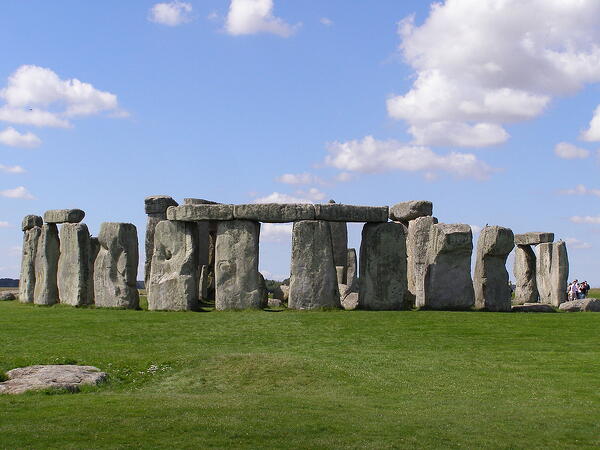
Image by Gareth Wiscombe, on Wikipedia Commons.
Stonehenge, taken by itself, is pretty remarkable - those megalithic stones were quarried hundreds of miles away in Wiltshire and Pembroke, moved on to the site, alligned with various astrological phenomena, and erected by a prehistoric culture with very few tools. But when combined with other monumental constructions on the same landscape, it is positively mind-boggling.
For example, it is impossible now to articulate why a prehistoric people would want to construct a giant, man-made hill at Silbury, 39.5 m high, comprised of half a million tonnes of chalk. One thing is for certain - the monumental design and interrelation of the sites in the area demonstrate the existence of a wealthy, organised society with remarkable spiritual connections to the environment.
There are literally thousands of remarkable ancient sites throughout the world, and each one can teach us something about the evolution of architecture, the way humans interact with built and natural environments, and role of architecture in fulfilling the changing nature and needs of society.
What ancient structures have you visited? Which have had a profound impact on your work?







